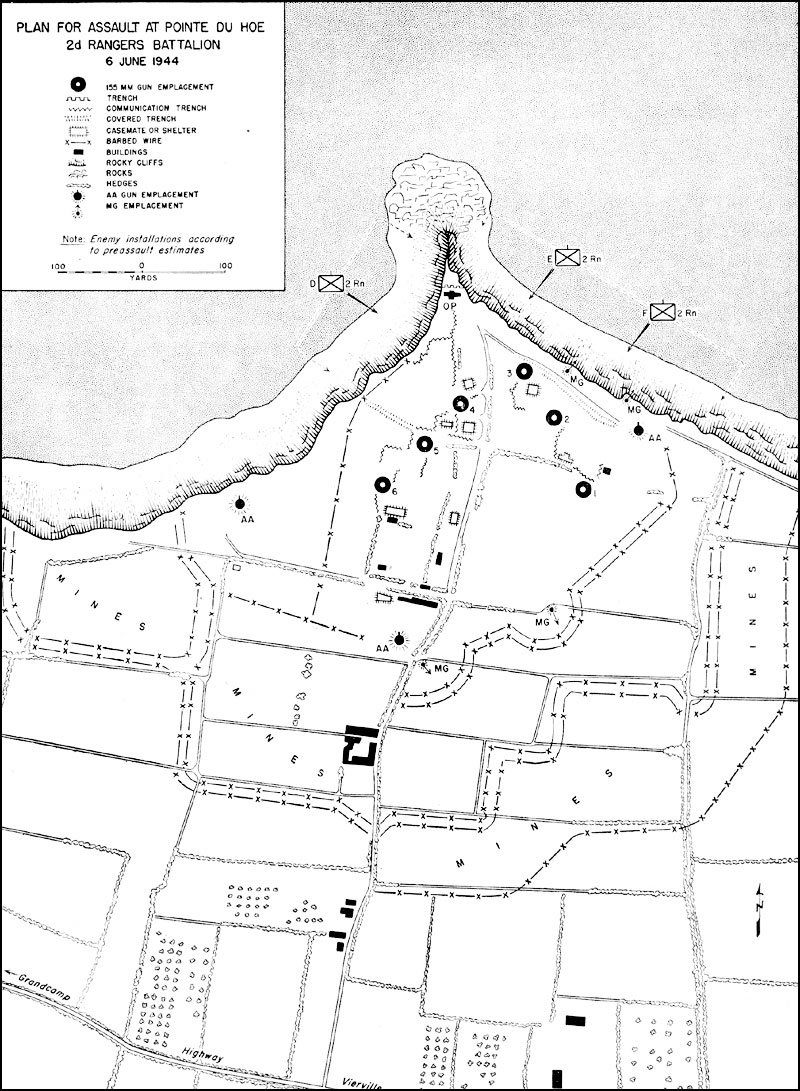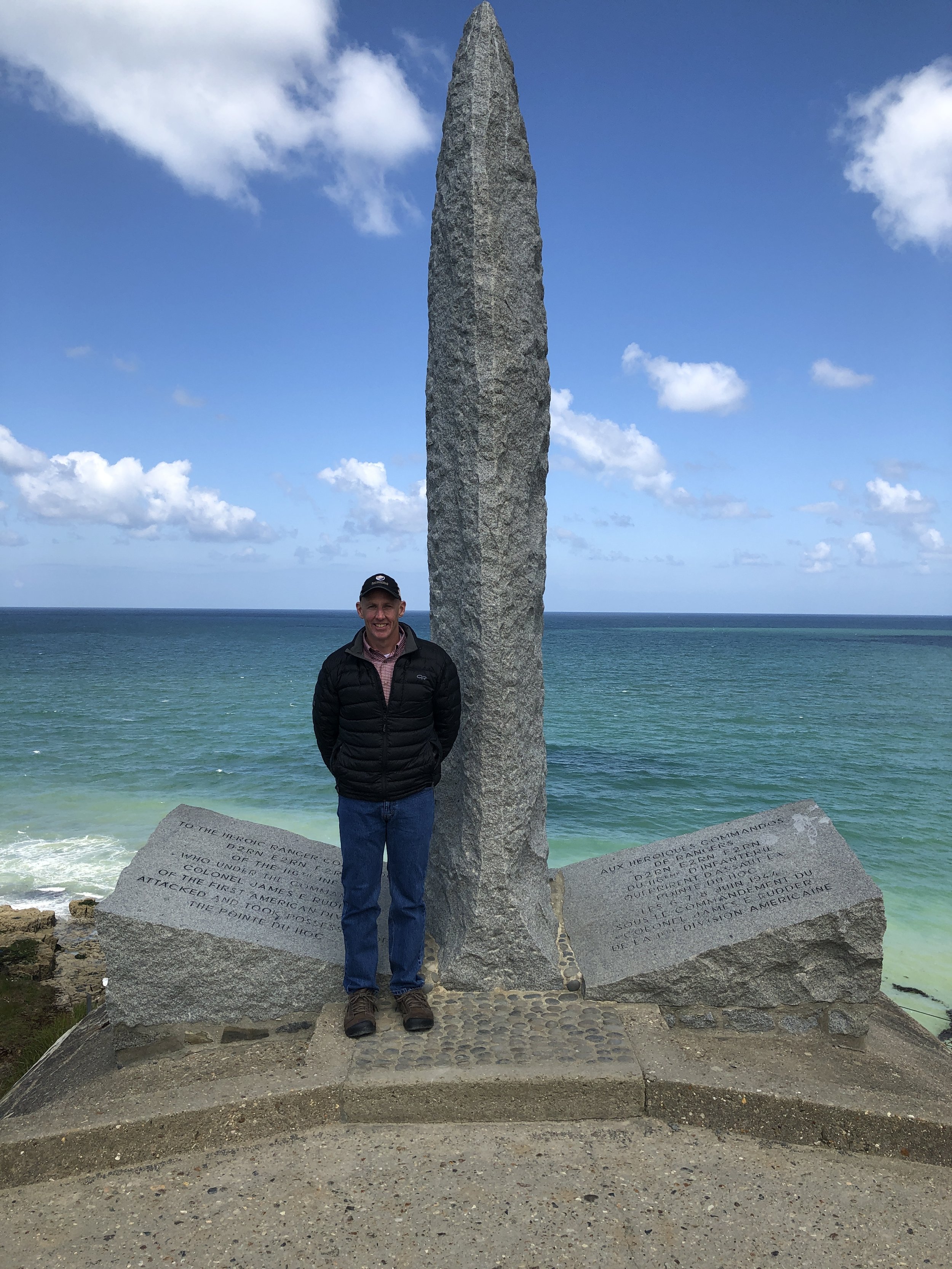Rangers Lead the Way! (#270)
Today’s post covers another aspect of the D-Day invasion -- the heroic actions of James Rudder and the 2nd Ranger Battalion at Pointe du Hoc.
This year, I am doing a series on leaders and leadership in the European Theater of Operations (ETO) in World War II. This is 18th in the series. Check out the blog to see them all or go to the links at the bottom of this article to see the most recent ones.
Rangers Lead the Way!
James Rudder was born in Eden, Texas on May 6, 1910. After graduating from Texas A&M in 1932, he was commissioned as a lieutenant in the US Army Reserves. During the Depression, he worked as a football coach and teacher in Texas until he was called to active duty in 1941. His experience as a coach and teacher made him mentally tough, calm under pressure, humble, and an inspirational leader.
Although the 2nd Ranger Battalion was established on March 11, 1943 in Tennessee, Major James Rudder didn’t take command of the battalion until June 30, 1943. The 500 Rangers in 2nd Battalion were selected from over 2,000 volunteers. Rudder was a tough, demanding leader. Once the team was set, he oversaw its arduous training in the United States and the United Kingdom.
For the D-Day invasion, 2nd and 5th Ranger Battalions were combined into the Provisional Ranger Group and attached to the 116th Infantry Regiment of the 29th Infantry Division (more on the 29th Infantry Division in next week’s post). The 116th Infantry Regiment had the task to land on the far western edge of Omaha Beach and secure Vierville, France. Task Force A, consisting of elements of 2nd Ranger Battalion’s Headquarters Company, as well as D, E, and F companies, was to land at the base of Pointe du Hoc at 6:30 am, scale the cliffs, and destroy the six 155mm guns that could shell both Omaha and Utah Beach. Task Force B and C would both land with the 116th Infantry Regiment and move westward to link up with Task Force A.
Prior to the landing, the US Army Air Corps bombed Pointe du Hoc on April 25, May 21-22, and June 4-5, and the battleship USS Texas and destroyers USS Satterlee and HMS Talybont shelled it on the morning of June 6th. The pre-invasion bombardment by planes and ships cratered the top of the Pointe, turning it into a moonscape.
Landing Plan for the Rangers at Pointe du Hoc
Aligning an organization both vertically and horizontally with a sense of purpose, or the “Why,” is extremely powerful. The leader’s intent is an effective tool for aligning an organization vertically and horizontally. The leader’s intent is a U.S. military technique used by leaders when they provide guidance or issue an order. It provides the purpose, or the “why,” and the “how,” as well as a vision for what a successful end state looks like. James Rudder provided the Provisional Ranger Group its purpose — to destroy the guns so they can’t impact the amphibious landings at either beach.
The men of 2nd Ranger Battalion landed at the base of Pointe du Hoc and scaled, hand-over-hand, the vertical cliffs by 7:00 am. Discovering that the six howitzers had been moved, they sent out patrols to find the guns since they understood their purpose. Later that morning, First Sergeant Len Lomell and Sergeant Jack Kuhn found the guns in a camouflaged position 250 yards south of the coastal highway. Using thermite grenades, they destroyed the howitzers. Although their mission was complete, their fight was far from over. For the remainder of June 6th and part of June 7th the small group of Rangers on Pointe du Hoc held out against numerous German counterattacks. By mid-day on June 7th, Task Force B and C had fought their way westward to Pointe du Hoc, regaining contact with the isolated Rangers and bolstered their defensive positions.
Of the approximately 500 men of the 2nd Ranger Battalion that participated in Operation Overlord, 77 were killed, 152 were wounded, and 38 were missing in action. Rudder himself was wounded twice during the battle. Thirteen Rangers, including James Rudder, received the Distinguished Service Cross, the nation’s second highest award for valor. In addition, the battalion received the Presidential Unit Citation.
The 2nd Ranger Battalion continued to fight as conventional infantry for the remainder of the war, but was never called upon again to use their special training and skills.
On June 6, 1984 — the 40th anniversary of the invasion — President Ronald Reagan gave one of his most famous speeches at Point du Hoc. As he said then:
Behind me is a memorial that symbolizes the Ranger daggers that were thrust into the top of these cliffs. And before me are the men who put them there. These are the boys of Pointe du Hoc. These are the men who took the cliffs. These are the champions who helped free a continent. These are the heroes who helped end a war.
Ranger Monument at Pointe du Hoc
Application
Do you provide your team with their purpose, or leader’s intent, like James Rudder did to the Rangers? Is your team able to adapt to changing conditions or changing environment? Does your team persevere in the face of adversity? Use the leader’s intent, or purpose, to help your team overcome its next obstacle.
Conclusion
The last five blog posts on leaders and leadership from the World War II European Theater of Operations are:
Interested in bringing your team to Leadership Experience that uses historic case studies, like the Rangers at Pointe du Hoc on D-Day to enhance your team’s leadership today? TFCG offers the D-Day, Market-Garden, and Battle of the Bulge Leadership Experiences in Europe. TFCG also offers the Eisenhower, Currahee!, the War in the Pacific Museum, and Pearl Harbor Leadership Experiences in the United States. Send me an email and we can start the discussion today about building better leaders in your organization using a historic Leadership Experience. Or click on one of the pictures to learn more about that specific program.
In the meantime, go on the offensive and use the Rangers at Pointe du Hoc to inspire you this week.


